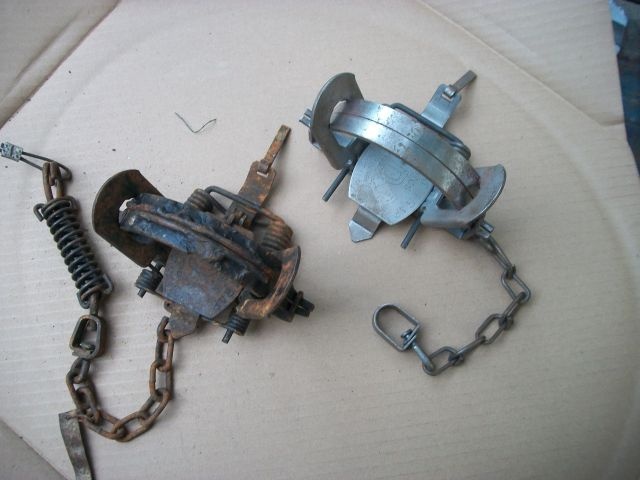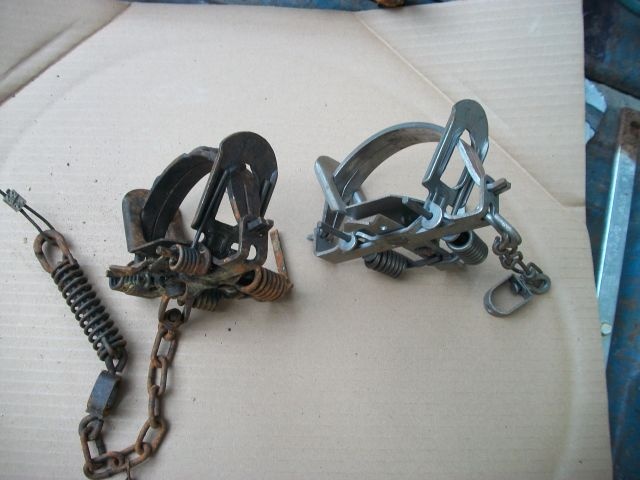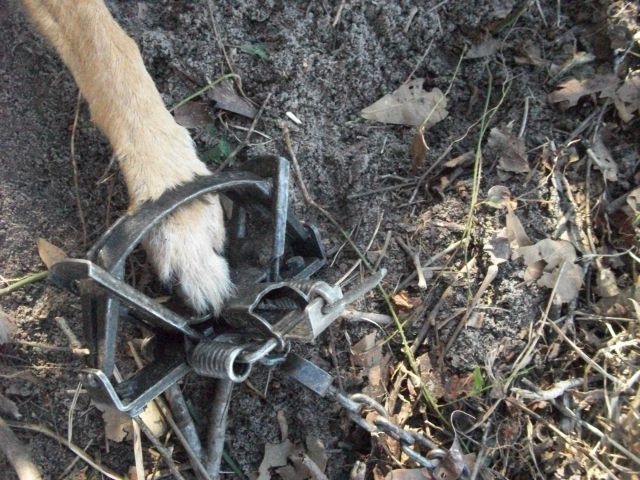Trappers are a tinkering bunch. We like to add, scrape, scratch, grind, build or change stuff. When we get new traps, the first thing we do is start reworking them to suit us and our needs.
But, there is method to our madness. We tinker and change things not just to increase our catch but also to relieve stress of the animal we are trapping. For instance, Jaw Lamination. This doesn’t make the trap hold any tighter, react any faster or catch more animals. It simply widens the jaws so that the pressure is spread over a greater area. This makes the trap more comfortable for the animal and reduces the risk of jaw cuts.
Here are a couple of my traps showing the differences in some of the modifications I’ve made.
Look closely at the two traps above. They look very different from one another but believe it or not, they are both the same trap. They are both Duke 1 3/4's. The one on the right is new. I've done nothing with it yet. The one on the left has been modified to suit me.
With the traps turned up on their sides you can see other modifications. First is the chains. Notice that they are different. I take the chains off my new traps and replace them with a better chain. Then I center them on the trap base. This helps to reduce foot damage as the animal pulls against the trap. With the chain centered the animal pulls straight against the jaws. With the chain to the side, as it comes originally, when the animal pulls, the trap tilts, twisting the foot to the side. This could cut the foot or even break toes due to the added leverage.
While we are looking at the chains, notice the shock spring at the end of the modified trap. This gives the animal a little cushion when pulling against the trap.
Looking closely at these two different traps, one other thing you may notice is the springs. Look at the trap on the right and you’ll notice it only has two springs where the one on the left has four. This helps to speed the trap up and make it quicker. This is important because when trapping using foot hold traps we want to get the perfect “Pad” catch. This is where the jaws close across the pad of the foot and not the leg or toes. This is where the animal will feel the least pain and discomfort.
The photo below shows this perfect pad catch.
Like I’ve said. Trappers love to tinker and we are always trying to improve our equipment and our methods.
I plan to add even more modifications to some of my traps. One in particular, I plan to shorten all my chains. This will help to reduce foot injuries as the animal will not be able to get as much momentum in its jumps, jerks and lunges. I also plan to add more swivels. The more swivels you have in a trap chain the less likely an animal will twist his leg and receive injury twisting. The trap itself will twist with the animal.
Anytime we come up on an animal in one of our traps that has suffered an injury of any kind, we go back to the drawing board and invent new ways to keep such injuries from ever happening again.
All of my traps meet or exceed international Best Management Practices. Box traps, cage traps, foot holds and even body grip traps are all designed and/or modified with the animals best interest in mind.
So much for "Cold, cruel and heartless", huh?




Latest comments
There is none. All that's mentioned is "native" wildlife and there are tons or restrictions there.I think there needs to be more restrictions on exotic pets just makes good sense.http://onedaytop.com/
Howdy, Mike! Welcome to my web site!
I've checked the regulations for some mention of exotics. There is none. All that's mentioned is "native" wildlife and there are tons or restrictions there.
I think there needs to be more restrictions on exotic pets just makes good sense. If allowed only qualified people with proper facilities shold be able too .But dont understand why I cant gig frogs!